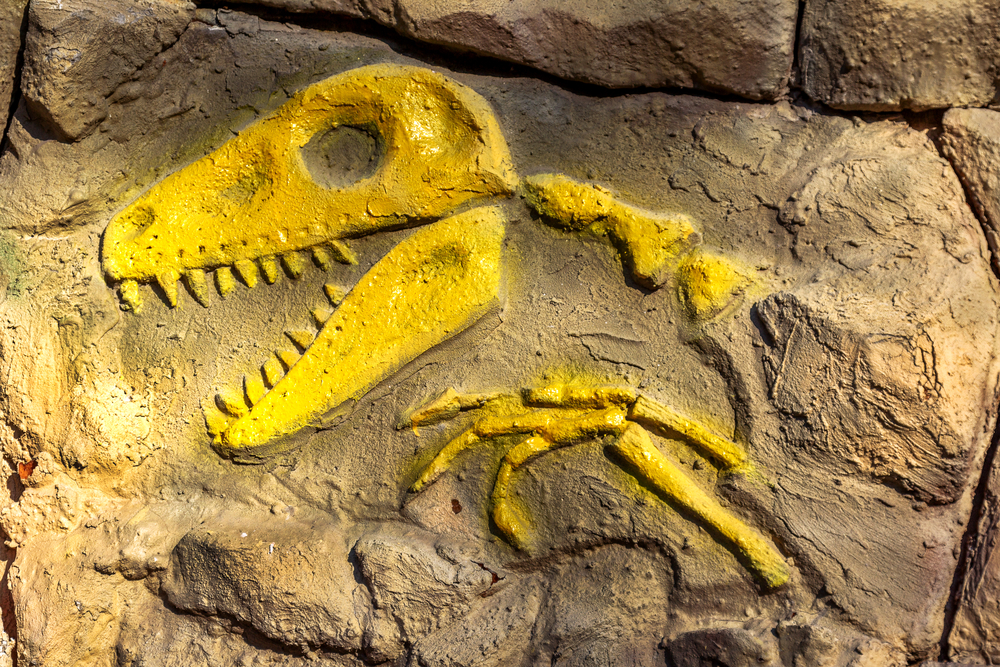Becoming Fossils
- December 2, 2014
- By

Forget those reality shows. Here are the ultimate survivors: Fossils.
Fossils, everyone knows, are our window into past life on Earth. Fossils can be actual pieces of an organism, such as bones, shells, leaves, pollen grains, or an insect trapped in amber. These are usually called body fossils. Fossils can also be trace fossils: tracks, footprints, leaf impressions, worm holes, and yes, even fossilized poop (called coprolites).
Yet even with all these different glimpses of ancient life, our view is far more limited than most people may realize. That’s because only a very small fraction of organisms are ever fossilized.
Becoming a fossil takes an improbable combination of conditions, like winning a complex game of chance. The odds are stacked against it.With your students, ponder just what this luck of the draw means to our understanding of life in the past. Are we really getting the whole story?
It’s worth exploring what lucky sequence of circumstances might result in a fossil. As an example, we’ll use a whole skeleton, those most charismatic of fossils. The first step to geologic immortality is, of course, death. A natural death is best, because if an animal is being trampled and torn to pieces, predators (or scavengers) are probably going to head off toting someone’s favorite femur. A jawbone here, a rib there does not a whole skeleton make. So here’s a good first step to becoming a fossil:
Die peacefully.
What’s more, waves, rain, and even sun, can destroy a potential fossil. Dynamic environments—tumbling rocks and powerful currents in a mountain river, or crashing surf on a rocky coast—are other sure ways to destroy an organisms’ remains.
Preferably, die in a body of water.
To improve chances even more, it’s much better to expire in a lake, swamp, or ocean. There, sediment can bury a creature quickly yet gently, and also before scavengers can make off with the parts. Think mud, sand or silt, settling over the remains like a blanket. The best fossil beds are typically in shale, which was once fine sediment, or limestone, which forms from the calcareous “rain” onto the sea floor of large and small shells and animal parts. This leads to the next point:
Get buried gently, yet fast.
There are exceptions, of course. Examples are preservation by another medium, such as the tar at Los Angeles’ LaBrae Tar Pits, insects in amber, and on rare occasions, ice.
Next, consider what an organism is made of. It’s pretty obvious that bones, shells, and teeth are going to hold up to the ravages of time and decay (think insects and bacteria) a lot better than soft parts such as muscles and guts. If a hard part stays intact for long enough, it may be slowly replaced by minerals, such as calcium, quartz, or more spectacularly, pyrite. Replaced or not, the fossil record definitely gives us a skewed impression. Where are the jellyfish, the anemones, the slugs? The next point is clear:
The more hard parts, the better.
Again, there are notable exceptions. The remarkable preservation of soft parts in the Burgess Shale of Canada (http://burgess-shale.rom.on.ca/en/) comes to mind. There, gentle (no rolling boulders or crashing waves) yet fast sedimentation led to the fantastic preservation of worm-like creatures, eyes, even primitive muscles. Many appear to be shadow impressions, but still, it’s a rare view.
Another advantageous feature: Small organisms are more likely to stay intact. In fact tiny organisms called foraminifera (http://www.ucmp.berkeley.edu/foram/foramfr.html) are among the most common fossils. Most are microscopic. It’s easy to understand why these tiny organisms or other relatively small, hard animals like trilobites are easier to find intact than a big old T-Rex or a shark. So remember:
Small is good.
Back to our skeleton. How is the fossilization going so far? Next challenge: surviving the next millions of years. The fossil has to remain intact, not crunched by landslides or plate tectonics, not cooked into oblivion by metamorphic or volcanic processes. Then, to be discovered by humans, it has to get to the surface where it can be uncovered.
Decayed, trampled, eaten, rotted, scattered, broken, smashed. Really, what are the chances of an organisms remains surviving? I’ve seen estimates that up to 97 percent of past species may never have even been discovered. I believe it.
Activities/Further Discussion Topics:
1. It’s easy to imagine how bones might become fossils, but this simple activity can help students explore how trace fossils form.
Materials: Small trays or pans, modeling clay, dried leaves, small sticks, shells
Press a layer of clay into the pan. Next, press the objects in, and finally cover with the remaining clay and press. Leave for several days. Can you remove the top clay layer? Did the leaf stay intact, and if not did it leave a “trace fossil” (impression) in one or both layers? How much detail can you see from the stick or shell?
2. Great fossil locations seem to crawl with ancient life. To paleontologists, here are some real rock stars: The great fossil fishing to be had in the Green River Formation, Wyoming; the remarkable 520 million year old Burgess Shale in the Canadian Rockies; LaBrae Tar Pits, where sabre tooth cats prowl into modern Los Angeles under the curious eyes of tourists; nests of dinosaur eggs in Montana and China; the fine mammal assemblages of the Badlands.
Have students choose one of these examples and research what sort of organisms are preserved. Can they make an educated guess why they are so well preserved? (considertype of sediment, type and size of organism, etc)
3. Further study/resources
There are many forms of fossil preservation, even drying. This website has a good discussion: http://www.fossilmuseum.net/fossilrecord/fossilization/fossilization.htm.
For younger students, this website by the UC Museum of Paleontology gives a simpler, interactive overview of how fossils form: http://www.ucmp.berkeley.edu/education/explorations/tours/fossil/)


